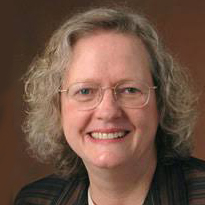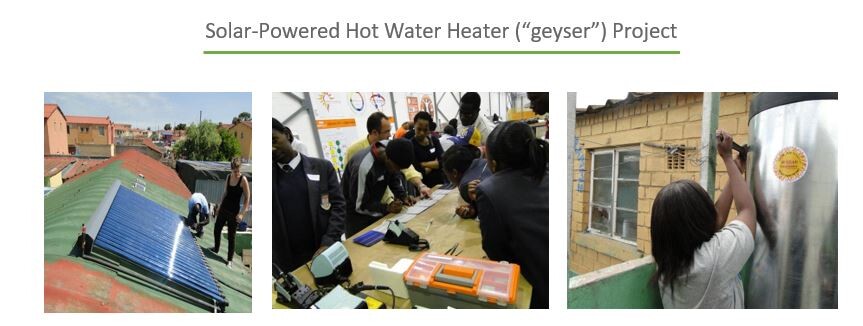IEEE Past President and current Distinguished Professor of Electrical and Computer Engineering at Purdue University looks back on EPICS in IEEE’s growth, impact, and bright future ahead
 IEEE Life Fellow Leah H. Jamieson, Ph.D. has contributed immeasurably to the field of engineering throughout her distinguished career, from serving as President and CEO of IEEE in 2007, President of the IEEE Foundation from 2012-2016, and John A. Edwardson Dean of Engineering at Purdue University (West Lafayette, IN, USA) from 2006-2017 to her current roles as Ransburg Distinguished Professor of Electrical and Computer Engineering and Professor of Engineering Education. But perhaps one of her most indelible contributions involves her role in launching “EPICS” (Engineering Projects in Community Service), an initiative which provides opportunities for students to work proactively with both engineering professionals and mentors, technological innovation, and local organizations/partners to develop solutions that address local community challenges revolving around access and abilities, education and outreach, human services, and sustainability and the environment.
IEEE Life Fellow Leah H. Jamieson, Ph.D. has contributed immeasurably to the field of engineering throughout her distinguished career, from serving as President and CEO of IEEE in 2007, President of the IEEE Foundation from 2012-2016, and John A. Edwardson Dean of Engineering at Purdue University (West Lafayette, IN, USA) from 2006-2017 to her current roles as Ransburg Distinguished Professor of Electrical and Computer Engineering and Professor of Engineering Education. But perhaps one of her most indelible contributions involves her role in launching “EPICS” (Engineering Projects in Community Service), an initiative which provides opportunities for students to work proactively with both engineering professionals and mentors, technological innovation, and local organizations/partners to develop solutions that address local community challenges revolving around access and abilities, education and outreach, human services, and sustainability and the environment.
Co-founded by Professor Jamieson and colleagues Ed Coyle and Hank Dietz at Purdue in 1995 and brought to IEEE in 2009, EPICS in IEEE has since facilitated more than 219 service-learning projects in 34 countries and involved over 11,000 students worldwide, nearly half of whom are women.
“We only dreamed of what EPICS would become when we started it,” shared Professor Jamieson, who admits to being among the most surprised – and delighted! — at the program’s precipitous growth and resounding success at IEEE over the past 15 years.
In the following Q&A, Professor Jamieson looks back on the program’s evolution, the project that will forever remain etched in her heart, and the impact she hopes EPICS in IEEE will have on generations of engineering students to come.
What inspired you to help establish the EPICS program at Purdue in 1995?
Professor Jamieson: In the early 1990s, industry professionals were telling us that engineering students had great technical knowledge but lacked communication and teamwork skills, an awareness of customers, experience in project management, and an understanding of the importance of ethics in engineering. Seeing a need that was being unmet in higher education nationally and considering it our obligation to our students, a small group of fellow electrical engineering faculty members and I spent time over a summer conceiving a structure that would help students develop these skills. We stalled out looking for projects so compelling that students would want to work on them for several semesters, until we learned about a request for proposals from the U.S. Department of Education for projects connecting university students with their communities. With supporting letters from 18 local community service agencies, we submitted a proposal and won a grant!
How did EPICS start at IEEE and what differences are there between the EPICS program at Purdue and EPICS in IEEE?
Professor Jamieson: Moshe Kam, who was Vice President of IEEE Educational Activities at the time, along with Saurabh Sinha and Kapil Dandekar, were impressed with our EPICS program at Purdue and brought it to IEEE in 2009. Both programs have similar values in that EPICS represents a partnership based on reciprocity between students/volunteers/professionals and their communities – it’s an educational experience for students and the community gets access to engineering expertise, which is often out of their reach. One big difference in the programs is that IEEE significantly expanded EPICS’ global reach, which is one of IEEE’s core and defining strengths. The other major difference is that at Purdue, EPICS is a track of for-credit courses, whereas EPICS in IEEE builds on the Institute’s volunteer structures.
What’s been your favorite EPICS in IEEE project over the past 15 years, and why?
Professor Jamieson: There was a project in South Africa in 2011 that I got to visit and will never forget. Mentored by then-graduate student David Oyedokun, university students were working to improve quality of life for children at an orphanage in Cape Town by designing, garnering resources for, and implementing a solar-powered hot water heater (“geyser”). They were very entrepreneurial in the way they solicited donations to cover the cost of the materials they needed and were successful in garnering a lot of support from the local business community. I met the students involved and they were so proud of what they had accomplished. Though it was just one of many success stories over the years, I truly lost my heart to that project and couldn’t have imagined anything like it when we were starting EPICS.

What impact do you feel EPICS in IEEE has had on the engineering profession?
Professor Jamieson: The connection between engineering, humanity, and community has become more integrated in the student experience such that it’s no longer uncommon for engineering students to participate in service learning. The current generation is particularly inspired to make a difference in the world and give back to their communities, and the opportunities they now have to do that as part of their engineering education are exciting to see. Programs like EPICS and EPICS in IEEE help show that engineering is a team sport, a life skill, and a caring profession, which has not been our traditional image.
Why is it important to support EPICS in IEEE through philanthropic giving?
Professor Jamieson: Community-based, student-focused programs like EPICS in IEEE don’t have obvious revenue streams in the conventional IEEE sense, but they’re incredibly important to IEEE’s core values. EPICS students create products, services, and access that others will benefit from. Grants give them the resources to be able to do that. Philanthropy brings these projects to life, and, through IEEE, donors will get the satisfaction of knowing that they’re supporting something incredibly good for students and impactful for communities.
Looking ahead, what’s your hope for the role EPICS in IEEE will continue to play in the world?
Professor Jamieson: EPICS has created a unique learning environment where students can invest their whole selves into projects that support their education, encourage them to contribute, and show them how they make a difference. My hope is that having community engagement be the heart of education for engineering students will become the norm. This central concept truly reinforces their sense of what it means to belong to a community, local or global, and the role that engineering can play. And it prepares them to be exceptionally capable, creative, empathetic engineers.
Finally, how does it feel to be celebrating EPICS in IEEE’s landmark 15th anniversary?
Professor Jamieson: EPICS in IEEE is very special to me because it represents a confluence of my Purdue career and my IEEE career. I’m delighted to be part of the 15th anniversary celebrations — it’s a great feeling!
For More Information
For more information on EPICS in IEEE or the opportunity to participate in service-learning projects, visit https://epics.ieee.org/.

Trackbacks/Pingbacks